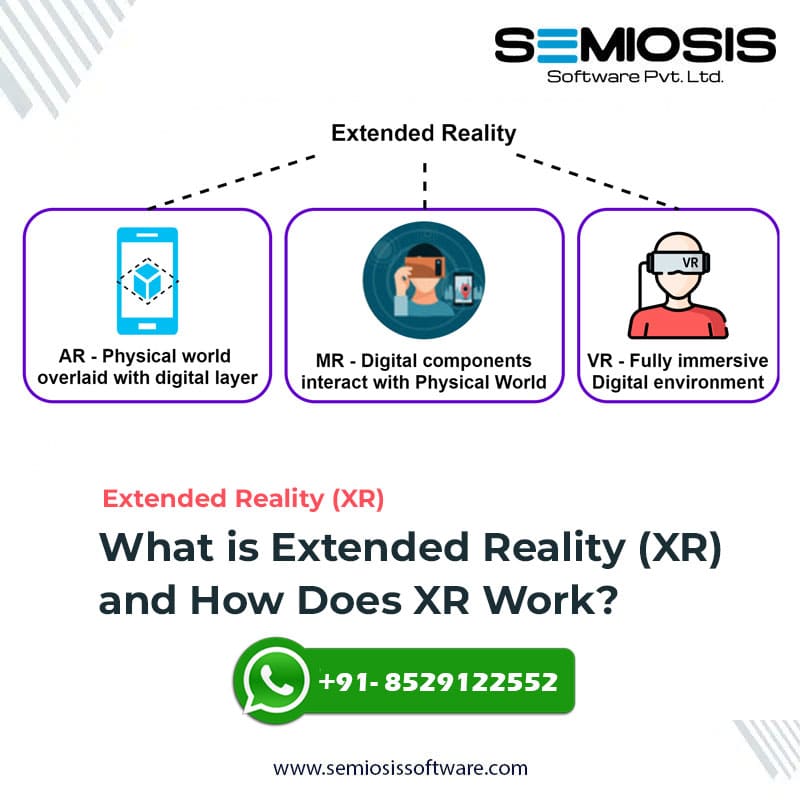Immersive Horizons Unveiled: A Deep Dive into Extended Reality (XR) and Its Transformative Technologies
In the ever-evolving landscape of technology, we find ourselves at the intersection of reality and virtuality, where immersive experiences redefine the way we interact with the digital realm. Extended Reality (XR) emerges as the umbrella term encompassing Virtual Reality (VR), Augmented Reality (AR), and Mixed Reality (MR). In this blog, we will delve into the realm of XR, exploring its definition, components, and the underlying technologies that make XR experiences possible.
Defining Extended Reality (XR):
Extended Reality refers to the spectrum of immersive technologies that bridge the gap between the physical and digital worlds. Unlike traditional interfaces that separate us from digital content, XR blurs these boundaries, offering a seamless integration of virtual and real-world elements. This spectrum includes three main categories:
- Virtual Reality (VR): Immerses users in a fully digital environment, shutting out the physical world entirely.
- Augmented Reality (AR): Overlays digital information onto the real world, enhancing the user’s perception of the environment.
- Mixed Reality (MR): Combines aspects of both VR and AR, allowing digital and physical elements to coexist and interact in real-time.
Key Components of XR:
To understand how XR works?, it’s essential to explore its key components:
- Sensors and Cameras: XR devices are equipped with sensors and cameras that track the user’s movements and the surrounding environment. These sensors capture data, enabling the device to adapt the virtual content to the real-world context.
- Display Technology: VR headsets, AR glasses, and MR devices use advanced display technologies to present digital content to users. This may involve high-resolution screens, optics, and, in some cases, holographic displays for MR experiences.
- Input Devices: To interact with the XR environment, users need input devices like controllers, gloves, or even gesture recognition. These devices translate real-world actions into digital interactions within the XR space.
- Processing Power: XR experiences demand substantial processing power to render realistic graphics and deliver seamless interactions. High-performance processors and graphics cards are crucial for a smooth XR experience.
How XR Works:
The functioning of XR involves a dynamic interplay of hardware and software components. Here’s a brief overview of the XR workflow:
- Sensing the Environment: Sensors and cameras collect data about the user’s surroundings. This information includes the user’s position, movements, and the features of the physical environment.
- Rendering Digital Content: Powerful processors process the collected data and generate digital content that seamlessly integrates with the real-world environment.
- Displaying the XR Content: The processed content is then displayed on the XR device’s screen, whether it’s a VR headset, AR glasses, or MR device. The display aligns with the user’s perspective, creating a convincing blend of virtual and real elements.
- User Interaction: Input devices enable users to interact with the XR environment. Whether it’s grabbing virtual objects in VR or manipulating augmented content in AR, these interactions enhance the overall immersive experience.
Applications of XR:
The versatility of XR extends its applications across various industries:
- Gaming and Entertainment: VR gaming, immersive storytelling, and virtual experiences redefine entertainment.
- Education and Training: XR provides realistic simulations for training purposes and enhances educational content through interactive experiences.
- Healthcare: From surgical simulations to patient care, XR is transforming the healthcare industry by offering innovative solutions.
- Enterprise: XR is used in design visualization, virtual meetings, and collaborative work environments to boost productivity.
Conclusion:
Extended Reality marks a paradigm shift in how we perceive and interact with the digital world. As technology continues to advance, XR will play an increasingly integral role in shaping the future of entertainment, education, healthcare, and beyond. Embracing the immersive potential of XR opens new frontiers, offering experiences that were once confined to the realms of imagination. As we navigate this fascinating intersection of reality and virtuality, the journey into the boundless possibilities of Extended Reality has only just begun.






